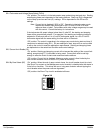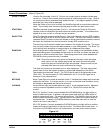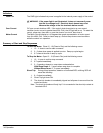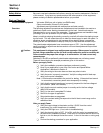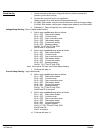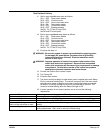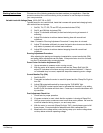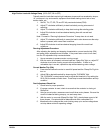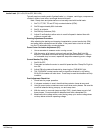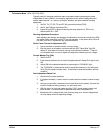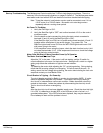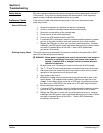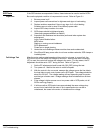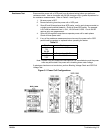
4-6 Start-up MN894
Inertial Load (S2-1=ON, S2-4=OFF, S2-5=ON)
Typically used on coasting and/or flywheel loads; i.e., chippers, centrifuges, compressors,
crushers, chillers, band saws, centrifugal fans and blowers.
Note: Ramp down and pulse start are not normally used with inertial loads.
1. Set TU, PT, RD, TD and PF fully counterclockwise (CCW).
2. Set RU approximately 90% clockwise.
3. Set CL to midpoint.
4. Set CM fully clockwise (CW).
5. Adjust CL sufficiently to allow motor to reach full speed in desired time with
maximum normal load.
Running Adjustment Procedure:
After adjusting the starting and stopping characteristics, current monitor/trip (CM)
and power factor adjustment can be made. If the power factor circuit is not used,
turn the PF adjustment fully counterclockwise.
Power Factor Correction Adjustment (PF):
1. Use an ammeter to measure motor running current.
2. With the motor at full speed, minimum load and the “Ramp End” light ON,
adjust PF clockwise to minimize running current without oscillation. If there is
no noticeable drop in current, repeat this step while measuring motor voltage.
Current Monitor/Trip (CM):
1. Set S2-2=OFF.
2. Press start and allow the motor to reach full speed and the “Ramp End” light to
turn ON.
3. Adjust CM to the desired threshold by observing the “CUR MON” light.
4. The “CUR MON” contact can be used to signal this threshold, or by setting
S2-2=ON, the starter will shut down. Press stop to reset the shutdown and trip
condition.
Post Adjustment Check List:
1. Check fans for proper operation.
2. If a bypass contactor is used, check that the contactor closes at ramp end.
3. Using a current probe, measure current on all three motor phases. Be sure the
current is balanced during ramp up, run and ramp down.
4. With the motor in run mode (ramp end light “ON”), check phase current of all
three phases. Currents should be balanced and within nameplate FLA.
5. Measure the line voltage at the control during ramp up to ensure voltage does
not drop below minimum operating voltage.



